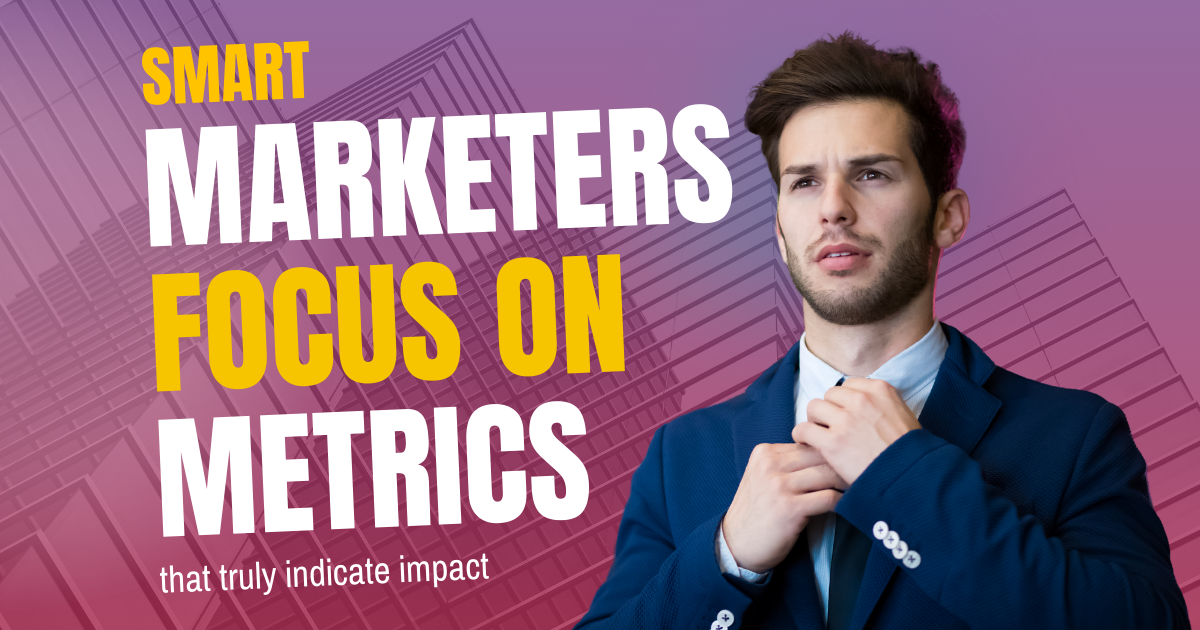Understanding Social Media ROI in 2025
Social media has evolved. Platforms are smarter, audiences are savvier, and competition is fiercer than ever. In 2025, measuring social media ROI isn’t optional; it’s essential. But here’s the catch: it’s no longer just about likes, shares, or follower counts. True ROI digs deeper. It’s about understanding how your content impacts your brand, engages your audience, and, ultimately, drives revenue.
That means your old approach of “post and hope” simply won’t cut it anymore. This is where AI-powered tools like PlanPost AI come into play, helping marketers not just post content, but post strategically.
1.1 Beyond Likes and Shares
It’s tempting to glance at a dashboard and feel satisfied when a post racks up hundreds of likes. But ask yourself: how many of those likes actually turned into meaningful actions? Likes are nice, but they rarely pay the bills. In 2025, smart marketers focus on metrics that truly indicate impact:
- Engagement Rate: This includes likes, comments, shares, and saves—but it’s the quality of engagement that matters. Are people commenting thoughtfully, asking questions, or sharing your content with their network? Or are they just double-tapping and moving on?
- Click-Through Rate (CTR): Did your audience take the next step and click on your link, landing page, or offer? CTR is a direct measure of how compelling your content is.
- Conversion Metrics: Ultimately, ROI is about results. Track how many clicks become leads, sign-ups, or purchases. This turns vague metrics into actionable insights.
With AI-driven platforms like PlanPost AI, these insights don’t have to be guesswork. AI analyzes engagement patterns, suggests optimal posting times, and even recommends content tweaks that are likely to increase meaningful interactions. Imagine having a virtual assistant that tells you exactly when and what to post to maximize your ROI—that’s the power of AI in 2025.
1.2 The AI Advantage in Measuring Social Media ROI
Here’s the part that excites marketers most: AI isn’t just a helper; it’s a game-changer. Tools like PlanPost AI combine data analytics with predictive modeling to give you a competitive edge.
For example:
- Content Optimization: AI can analyze which posts resonate with your audience and suggest improvements. Should your next post be an infographic, a short video, or a carousel? AI knows.
- Scheduling Insights: Posting at the wrong time can tank engagement. AI identifies when your audience is most active, ensuring your content hits the right eyes at the right moment.
- Hashtag & Caption Suggestions: Struggling to write captions that actually drive clicks? AI generates options tailored to your audience and niche, saving hours of brainstorming.
This doesn’t replace human creativity—it amplifies it. You’re still the storyteller, but AI ensures your stories reach the people who are most likely to act.
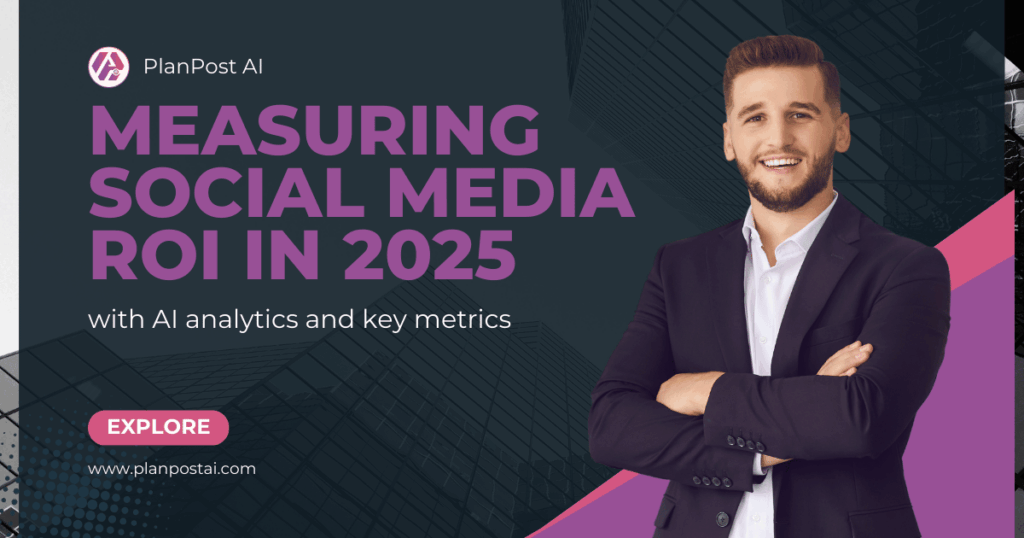
1.3 Defining ROI in 2025
So, what exactly does social media ROI mean in 2025? Here’s a simple way to think about it:
ROI = Impact on Business Goals ÷ Investment in Time, Money, and Resources
The “impact on business goals” is no longer measured only in revenue. Consider:
- Brand Awareness: Are more people talking about your brand online? Are mentions and shares increasing?
- Lead Generation: Are your social campaigns driving qualified leads to your sales funnel?
- Customer Loyalty: Are followers engaging repeatedly over time, forming a community around your brand?
By expanding your definition of ROI, you shift from vanity metrics (likes and followers) to metrics that truly move the needle. And here’s the key: AI tools help you measure all of this accurately and efficiently, making it easier to prove the value of every campaign.
1.4 Real-World Example
Let’s put this into perspective. Imagine a small boutique using PlanPost AI to manage Instagram and Facebook:
- Content Creation: AI suggests posts based on trending topics and the boutique’s niche (vintage fashion).
- Scheduling: Posts are automatically scheduled at times when followers are most active.
- Engagement Tracking: AI monitors which posts drive comments, clicks, and conversions.
After a month, the boutique sees:
- 30% increase in traffic to their website
- 25% more newsletter sign-ups from social media
- Several posts going viral within the niche, boosting brand awareness
That’s social media ROI in action—measured not just by likes, but by tangible business results.
Key Takeaways:
- Likes are nice, but meaningful engagement drives ROI.
- AI-powered tools like PlanPost AI amplify your strategy without replacing human creativity.
- ROI in 2025 is broader than revenue—it includes awareness, leads, and loyalty.
- Accurate measurement transforms social media from guesswork to a growth engine.
Metrics That Truly Matter to Measuring Social Media ROI in 2025
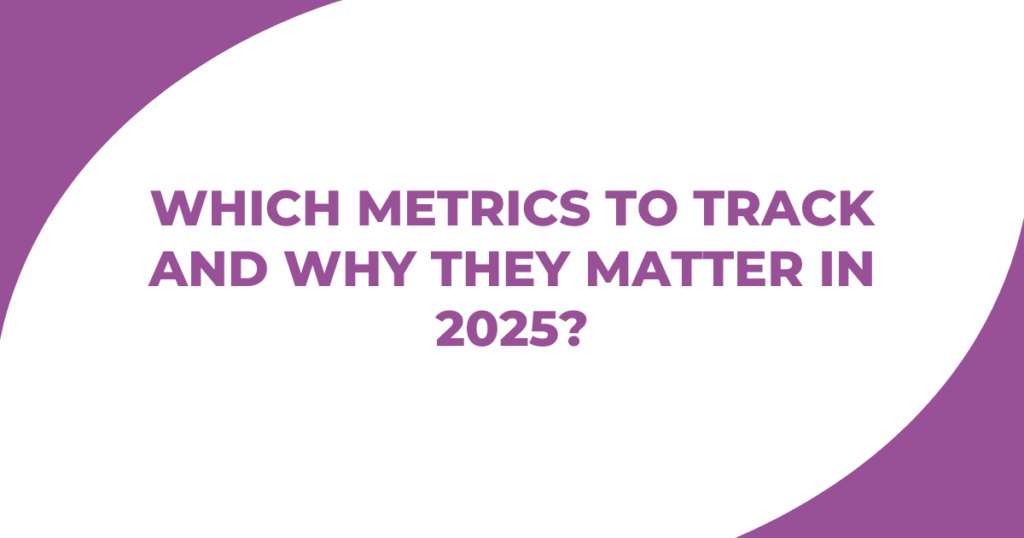
By now, you understand that social media ROI isn’t just about likes or follower counts. But if you want to turn your efforts into real business growth, you need to know exactly which metrics to track—and why they matter. In 2025, it’s about moving beyond vanity metrics to actionable insights that show how your social media strategy is impacting your brand.
2.1 Engagement Quality: More Than Just Numbers
Think of engagement as a conversation rather than a scoreboard. Sure, seeing a post with 1,000 likes is satisfying—but what does it really tell you?
Key Engagement Metrics to Track:
- Comments & Discussions: Are followers asking questions, sharing opinions, or interacting meaningfully with your content? Comments indicate interest and intent, not just passive approval.
- Shares & Saves: When someone shares your post or saves it for later, it signals value. AI tools like PlanPost AI can analyze which posts are most likely to be shared based on previous performance.
- Story Interactions: Polls, quizzes, and swipe-ups aren’t just fun—they show active participation and help you understand audience preferences.
Tip: Don’t just count engagement; measure the type and quality of interactions. Meaningful engagement often predicts higher conversion rates down the line.
2.2 Conversion Metrics: Turning Engagement into Results
Engagement is great—but ROI comes when engagement drives actionable results.
Key Conversion Metrics:
- Lead Generation: Track how many social media interactions lead to newsletter sign-ups, downloads, or inquiries.
- Sales Revenue: How much direct revenue is generated from social campaigns? Use tracking links or UTM parameters to measure this accurately.
- Cost Per Acquisition (CPA): Divide your campaign spend by the number of new customers acquired. Lower CPA means higher ROI.
With AI-driven platforms, you can predict which content will generate the most conversions. For instance, PlanPost AI analyzes historical data to suggest post formats, captions, and hashtags most likely to drive clicks and leads.
2.3 Brand Awareness Metrics: Visibility That Counts
Metrics like likes and impressions matter when it comes to spreading awareness—but not all visibility is equal.
Key Brand Awareness Metrics:
- Reach & Impressions: How many unique users see your content? How often are your posts displayed?
- Share of Voice: Compare your mentions and visibility with competitors. Are people talking more about your brand than others in your niche?
- Mentions & Tags: Track organic discussions about your brand, products, or services. AI tools can automatically monitor mentions across platforms, alerting you to trending topics or potential crises.
Pro Tip: Pair awareness metrics with engagement quality. A large audience won’t translate into ROI if they aren’t interacting meaningfully.
2.4 Customer Retention & Loyalty Metrics
Social media isn’t just about attracting new customers—it’s about keeping them. Long-term ROI comes from building relationships and loyalty.
Key Retention Metrics:
- Repeat Engagement: Are followers interacting with multiple posts over time? Consistent engagement signals a loyal audience.
- Community Growth: Are your social groups, newsletters, or memberships expanding? Growth in these areas indicates a deepening connection with your brand.
- Customer Feedback: Monitor comments, reviews, and messages for sentiment analysis. AI tools can flag trends and help you respond faster, improving satisfaction.
2.5 Putting Metrics Together: The Complete Picture
The real power comes when you combine these metrics:
- High engagement quality + strong conversion metrics = campaigns that both connect and sell.
- Brand awareness + repeat engagement = long-term growth and loyalty.
- AI insights + multi-metric analysis = smarter, more efficient social media strategies.
Example: A fashion brand uses PlanPost AI to schedule posts, track engagement, and predict conversions. They notice a carousel post has high shares and comments (engagement quality) and leads to sign-ups (conversion metric). This insight guides future content decisions, improving ROI while saving time.
Key Takeaways:
- Focus on quality of engagement, not just numbers.
- Track conversion metrics to link social media activity to revenue.
- Measure brand awareness with reach, mentions, and share of voice.
- Don’t forget customer retention and loyalty, which drive long-term ROI.
- Use AI to analyze patterns, predict success, and optimize content.
Tools to Measure Social Media ROI in 2025

By now, we’ve covered what social media ROI is and which metrics truly matter. But knowing what to measure is only half the battle. The real game-changer in 2025 is how you measure it—and the right tools can make a massive difference.
Think about it: manually tracking conversions, engagement quality, and brand mentions across multiple platforms is overwhelming. That’s where AI-powered tools like PlanPost AI come in—they don’t just automate tasks, they provide actionable insights that help you grow smarter, faster, and more efficiently.
3.1 Native Platform Analytics: The Starting Point
Every social platform offers some analytics, and they’re a great place to start:
- Facebook Insights: Track reach, engagement, video views, and conversion events.
- Instagram Analytics: Understand story interactions, follower growth, and post performance.
- LinkedIn Analytics: Monitor post impressions, profile visits, and engagement by professional audience.
- TikTok Analytics: Identify trending content and audience demographics for video campaigns.
While native analytics provide raw data, they often lack cross-platform insights. That’s where third-party and AI tools shine.
3.2 Third-Party Analytics Platforms
Several platforms allow you to consolidate data across social channels, saving time and increasing accuracy:
- Hootsuite: Schedule posts, track engagement, and monitor ROI across multiple platforms.
- Sprout Social: Offers detailed reporting, competitor benchmarking, and audience insights.
- Buffer: Focuses on scheduling and performance tracking with simple reporting dashboards.
These tools are great, but they still rely on human interpretation for predictive analysis—enter AI.
3.3 AI-Powered Insights: Smarter ROI Tracking
AI doesn’t just track metrics—it predicts trends, recommends actions, and automates routine tasks. Here’s how:
3.3.1 Predicting Performance
AI tools like PlanPost AI analyze historical engagement, reach, and conversion data to forecast how upcoming posts are likely to perform. Instead of guessing the best time to post, AI recommends the optimal schedule based on audience behavior.
3.3.2 Content Suggestions
Ever struggle with deciding what type of content will resonate? AI evaluates past content performance, trends in your niche, and audience preferences to suggest post formats, captions, and hashtags that are most likely to drive engagement and conversions.
3.3.3 Automated Reporting
Instead of manually creating spreadsheets, AI generates clear, actionable reports showing ROI across campaigns. You can see which posts are performing, which are underperforming, and where to allocate resources—all at a glance.
3.3.4 Audience Segmentation
AI tools segment your audience based on behavior, demographics, and engagement patterns. This allows highly targeted campaigns that improve conversion metrics and reduce wasted spend.
3.4 Real-World Example
Let’s bring this to life with an example:
A boutique lifestyle brand uses PlanPost AI to manage Instagram, Facebook, and LinkedIn:
- Content Suggestions: AI recommends posts that are likely to drive clicks based on historical engagement.
- Scheduling: Posts are automatically timed for when followers are most active.
- Automated Analytics: After two weeks, AI generates a report showing which content led to sign-ups, website visits, and revenue.
- Optimization: Using AI recommendations, the brand adjusts future posts, improving engagement and lowering CPA.
The result? They spend less time guessing, get better engagement, and see measurable ROI.
3.5 Choosing the Right Tool
When selecting tools to measure ROI, consider:
- Ease of Use: Can your team adopt it quickly?
- Cross-Platform Support: Does it track all channels you use?
- AI Capabilities: Does it offer predictive insights, content recommendations, and automated reporting?
- Integration: Can it connect with CRM, email marketing, and sales platforms for full ROI visibility?
Pro Tip: Don’t just chase features—choose tools that align with your business goals. A simpler AI-powered tool that drives real results is better than a complex one that’s too hard to use.
Key Takeaways:
- Native analytics are useful but limited; third-party tools help consolidate data.
- AI-powered platforms like PlanPost AI provide predictive insights, content suggestions, and automated reporting.
- Audience segmentation and performance forecasting are essential for maximizing ROI.
- Choosing the right tools ensures your metrics aren’t just numbers—they become actionable insights that drive growth.
Calculating Social Media ROI: Step-by-Step in 2025
You’ve tracked your engagement, measured conversions, and harnessed AI insights—but how do you turn all that data into a tangible ROI figure? Calculating social media ROI in 2025 isn’t just about formulas; it’s about understanding what drives business results and using AI tools to make the process smarter, faster, and more accurate.
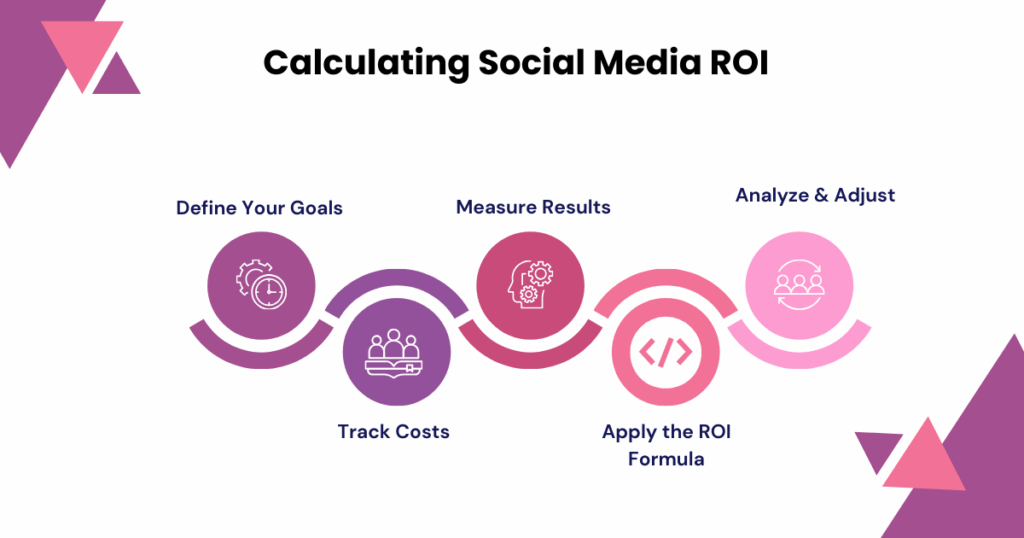
4.1 Step 1: Define Your Goals
Before you crunch numbers, ask yourself: What does “success” look like for my brand? ROI depends entirely on your objectives. Some common social media goals include:
- Brand Awareness: Are you trying to increase visibility and reach?
- Lead Generation: Are you focused on collecting qualified leads?
- Sales & Revenue: Do you want to drive purchases directly from social campaigns?
- Customer Loyalty: Are you aiming to retain and engage existing customers?
Pro Tip: Clearly defining goals upfront makes it easier to measure ROI accurately and avoid chasing vanity metrics.
4.2 Step 2: Track Costs
Next, quantify what you’re investing in social media. ROI isn’t just about ad spend; it includes:
- Paid advertising campaigns (Facebook Ads, Instagram Ads, LinkedIn Ads)
- Tools and software subscriptions (e.g., PlanPost AI, scheduling tools, analytics platforms)
- Team hours spent creating, posting, and engaging
- Creative production costs (graphics, videos, photography)
By calculating all these inputs, you get a complete picture of your investment.
4.3 Step 3: Measure Results
Now, measure outcomes against your goals:
- Conversions: Track website visits, sign-ups, downloads, purchases, or other actions. Use UTM parameters to link activity back to social campaigns.
- Revenue Attribution: Calculate how much revenue originated from social media posts, ads, or campaigns.
- Engagement Insights: Review which posts had meaningful interactions and drove traffic or conversions.
AI tools like PlanPost AI can automate this step, providing real-time dashboards that consolidate cross-platform results. This saves hours of manual tracking while highlighting patterns you might miss.
4.4 Step 4: Apply the ROI Formula
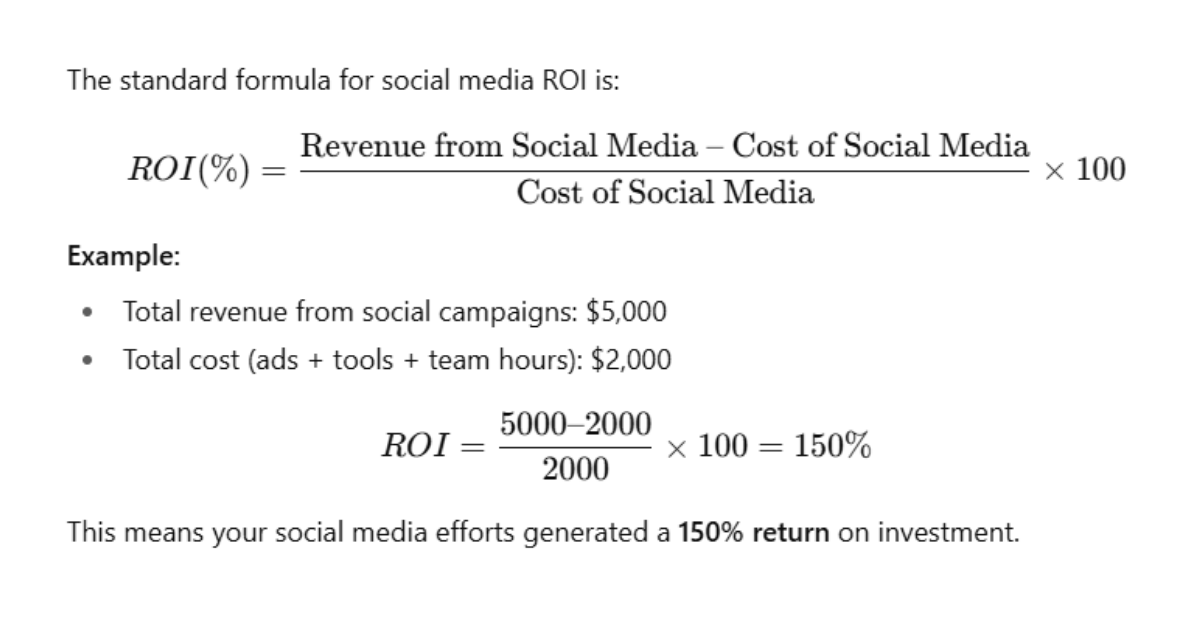
This means your social media efforts generated a 150% return on investment.
4.5 Step 5: Analyze & Adjust
Measuring ROI is only useful if you act on the insights. After calculating ROI:
- Identify Top-Performing Campaigns: Which posts, formats, or channels drove the highest returns?
- Understand Underperformance: Which campaigns didn’t meet expectations and why?
- Adjust Future Strategy: Use AI recommendations to schedule content, target the right audience, or experiment with new formats.
AI Advantage: Predictive analytics can help forecast which future posts will likely deliver higher ROI based on historical data. PlanPost AI, for instance, can suggest content types, hashtags, and posting times to maximize returns.
4.6 Real-World Example
A boutique e-commerce brand ran an Instagram campaign promoting a new product line:
- Goal: Drive sales
- Investment: $1,500 (ads + tools + content creation)
- Revenue Generated: $4,200

Using AI analytics, the brand discovered:
- Carousel posts generated the highest conversions
- Optimal posting times were evenings and weekends
- Specific hashtags led to 30% more reach
By adjusting future campaigns based on these insights, they increased ROI even further, without increasing spend.
Key Takeaways:
- Define your goals clearly before measuring ROI.
- Include all costs, not just ad spend, for an accurate picture.
- Track conversions, revenue, and meaningful engagement.
- Use the ROI formula to quantify returns.
- Leverage AI insights to optimize campaigns and improve future results.
Common Challenges in Measuring Social Media ROI in 2025
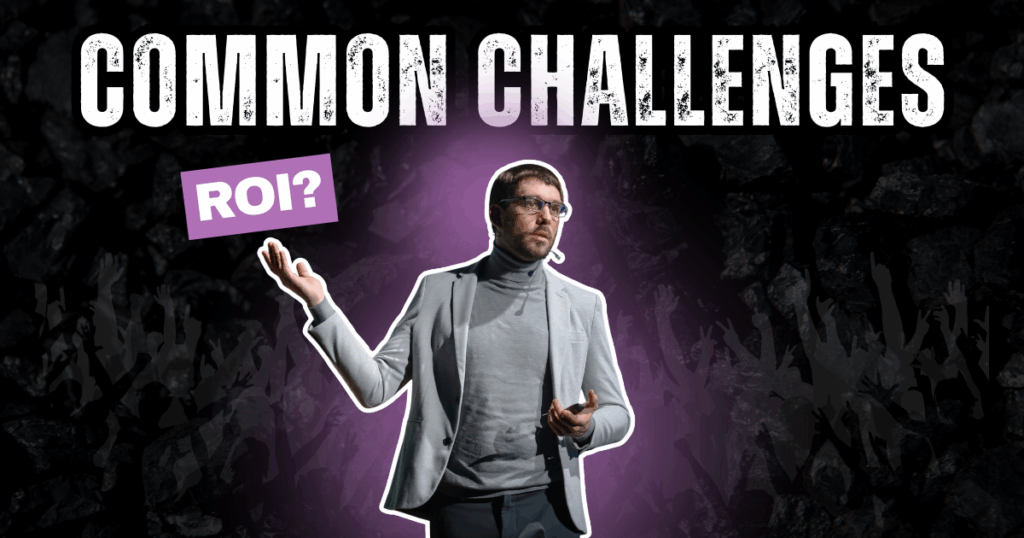
Measuring social media ROI in 2025 is more sophisticated than ever—but it’s not without its challenges. Even with the best tools and strategies, marketers face obstacles that can cloud insights or make ROI calculations tricky. The good news? Understanding these challenges and addressing them proactively ensures your efforts deliver real value.
5.1 Attribution Difficulties
One of the biggest hurdles in measuring ROI is attribution—figuring out exactly which posts or campaigns led to conversions. With customers interacting across multiple platforms, devices, and touchpoints, it’s easy to lose track.
Why it matters: Without proper attribution, you might overvalue some campaigns while undervaluing others, leading to misguided strategy decisions.
Solution:
- Use UTM parameters and conversion tracking to follow the journey from social media to website actions.
- Employ AI-powered analytics like PlanPost AI that consolidates data from multiple platforms and predicts which posts contributed most to conversions.
- Consider multi-touch attribution models instead of single-touch models for a more accurate view.
5.2 Multi-Platform Campaign Complexity
In 2025, brands are rarely just on one platform. Instagram, Facebook, LinkedIn, TikTok, YouTube—even emerging platforms—all matter. Each has different algorithms, metrics, and audience behaviors, making consistent ROI measurement challenging.
Why it matters: You could be performing well on one platform while underperforming on another, but without consolidated data, these insights remain hidden.
Solution:
- Use cross-platform dashboards to monitor performance in one place.
- AI tools can normalize metrics across platforms, helping you compare engagement, conversions, and ROI consistently.
- Focus on key metrics per platform while maintaining a unified view of overall ROI.
5.3 Balancing AI Automation with Human Oversight
AI can predict trends, suggest content, and automate posting—but it’s not infallible. Over-reliance on AI without human oversight can lead to irrelevant content, tone mismatches, or missed opportunities.
Why it matters: Misaligned content can reduce engagement, hurt brand perception, and negatively affect ROI.
Solution:
- Treat AI as an assistant, not a replacement. Human input ensures content aligns with your brand voice and strategy.
- Review AI recommendations before posting. Adjust captions, visuals, and hashtags as needed.
- Combine AI insights with qualitative audience feedback to refine campaigns.
5.4 Data Overload
Tracking every possible metric can be overwhelming. Likes, shares, CTR, impressions, reach, conversions, CPA, sentiment—the list goes on. Too much data can lead to analysis paralysis, where decisions are delayed or misinformed.
Why it matters: Focusing on the wrong metrics wastes time and can skew ROI calculations.
Solution:
- Prioritize metrics that directly tie to business goals (conversions, revenue, leads).
- Use AI tools to highlight key insights and automate reporting.
- Regularly audit which metrics truly impact ROI and discard unnecessary ones.
5.5 Real-World Example: Overcoming Challenges
A mid-sized e-commerce brand faced challenges measuring ROI:
- Multi-platform campaigns spread across Instagram, Facebook, and TikTok.
- Conflicting metrics made it hard to determine which content generated sales.
- The team was overwhelmed with reporting.
Solution:
- They implemented PlanPost AI to consolidate data and automate reporting.
- AI identified top-performing posts and predicted which content would likely convert next.
- Human marketers reviewed AI suggestions and refined captions, visuals, and hashtags.
Result:
- ROI calculation became clearer and more accurate.
- Engagement increased by 20%, and conversions rose by 15% in three months.
Key Takeaways:
- Attribution and multi-platform complexity are major challenges—use AI and tracking tools to solve them.
- AI automation should always be guided by human oversight to maintain brand voice.
- Focus on meaningful metrics to avoid data overload and improve ROI insights.
- Combining AI insights with human judgment ensures campaigns are both effective and authentic.
